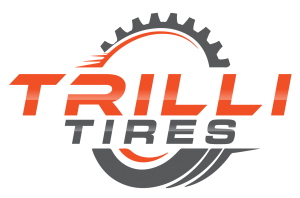
4 Red Flags That Show You Need New Tires
Any equipment comes with a limited lifespan, and this includes your car’s tires. The quality can degrade through time, and while preventive maintenance can preserve its peak performance, it’s best not to wait until your tires are caving in from the pressure. After all, tires can take miles of beating every time you drive.
Replacing them as soon as you notice any tell-tale signs of old-age can save you the risk of running into a hazardous blowout on the road. Visual inspection alone won’t clue you in on the right time to update your tires, that’s why the guide below should showcase warning signs to steer you in the right direction when considering new tires:
Red Flag #1: Low Tread Depth
The golden rule for drivers is that their car’s tires should never fall below 1.6 millimetres in depth. The standard for the tread depth becomes more apparent when driving on slick or wet roads as the tread depth is responsible for maintaining a safe level of traction, though it’s best to have twice the level of depth to enhance your car’s grip.
Fortunately, measuring your tire’s tread depth will only cost you a penny – literally! Take out a coin and insert it into the tread – if you see the top part of the coin’s head, it’s a visible sign that you don’t have enough tread. With that in mind, you can quickly solve the problem by getting a new set of tires from your local mechanic.
Red Flag #2: Tread Wear
Constant driving can cause tires to wear-and-tear. Conversely, new tires have a modern way of checking its state and performance thanks to the indicator bars built into the tires. This indicator visibly signifies if the treads are worn out beyond its safe depth, allowing you to kick the tires and test its reliability.
Keep in mind that while the indicator bar showcases the tire’s longevity, your driving habits will directly influence the actual results. On that note, you’ll need a quick change of tires if you notice the tread-wear grade is low.
Red Flag #3: Cracks in the Sidewall
In addition to staying vigilant with your tire’s treads, don’t forget to check up on its sidewalls too. Any cuts, grooves, or cracks in the sidewall can lead to costly consequences as it could lead to leakage, which results in eventual, dangerous blowouts. Even if you notice just a hairline scratch, it’s best to make a pit-stop to your nearest car repair and replace your old tires.
Red Flag #4: Excessive Tire Vibration
Minute vibrations are typical in cars, especially if you are driving through bumpy roads or install the tires incorrectly. If you notice any excessive vibration at 40 to 50 mph, long after you re-align the wheels, it’s a tell-tale sign that you need to have a professional diagnose your tires for any internal problems.
Updating your worn-out tires can make a world of difference in improving driver safety. With that in mind, watch out for the common red flags above to drive away from trouble and ensure a smoother, more secure ride.
If you’re looking for new tires for your car in Richmond Hill, get in touch with us today! We’re happy to help.

